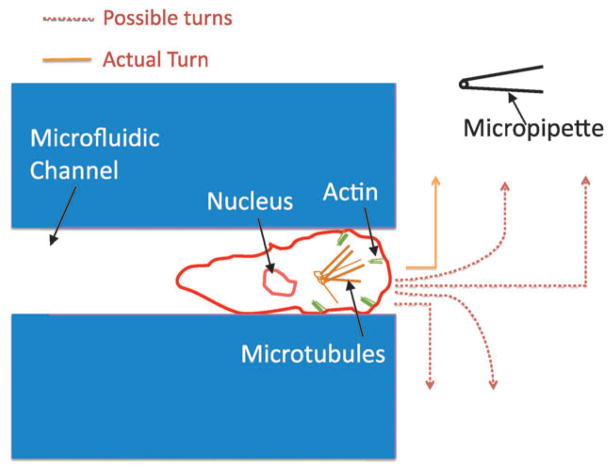Fig. 5.
Turning strategy of cells exiting the channel. Cells that exited the channels had a number of possible directions to follow as they made their way toward the micropipette. Cells could have continued in a straight line, turned in the correct direction, or migrated 180° in the opposite direction. They could have also made more shallow turns in the correct or incorrect direction. They mostly migrated directly toward the micropipette, even while their trailing edge was still not exposed to the gradient that was perpendicular to the cell. Since the cells did not make a shallow turn, as might be expected if you averaged the proportion of the cell’s outer surface that is normally exposed to the chemoattractant, the rear of the cell contributed little or no spatial information to the turning profile of the cell.

